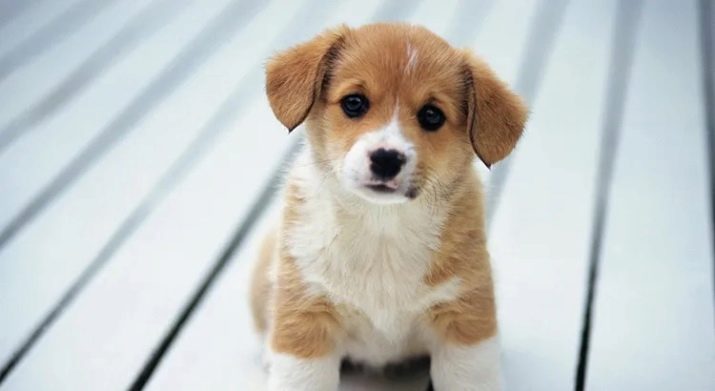What is grooming and how is it done?
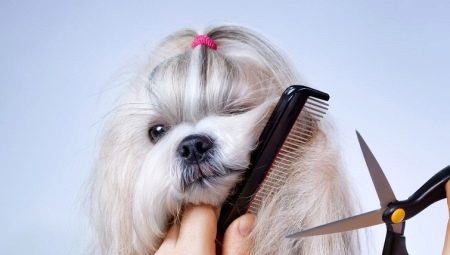
Grooming is a complex of grooming procedures for pets. It may include only hygiene or additional measures aimed at improving the aesthetic appearance. Specialists are engaged in grooming, but some procedures can be performed at home.
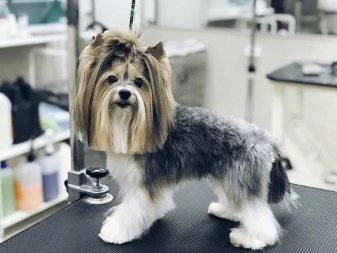
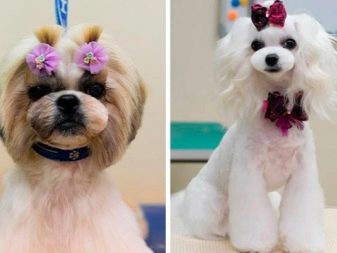
What it is?
The name denoting a set of caring procedures comes from the English "groom". Initially, this word was used only in relation to horses, but later it spread to other animals as well. Today, grooming most often means hygienic and aesthetic care for dogs or cats, most of the specialized salons work with them. But there are also procedures for other pets: parrots, guinea pigs, reptiles.
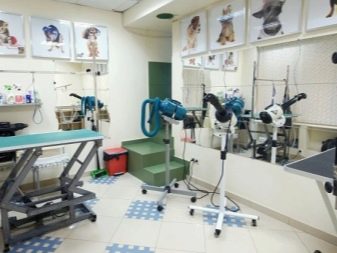
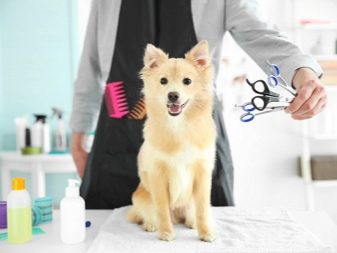
The history of grooming has more than one millennium - even in ancient Egypt it was customary to care for temple cats, which were considered sacred there. The fashion for beauty salons for pets originated in France in the 18th century; dogs at that time were kept in any noble house. Poodles, recognized as the official palace breed, were especially popular and required appropriate care.
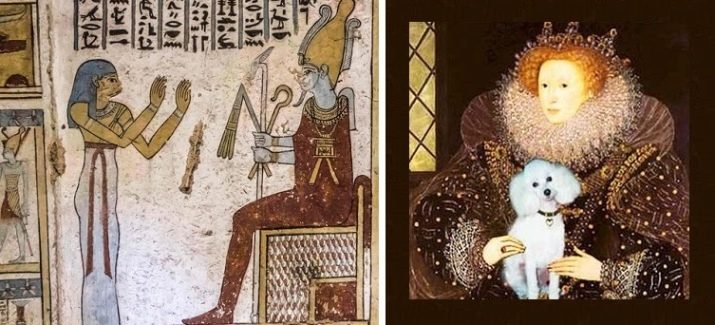
The ancient procedures were far from modern, for example, it was recommended to use sour milk as a rinse and make a bran mask to make the coat silky and shiny. Grooming began to actively develop in the United States in the 20th century - special clippers, cosmetics and other accessories appeared, the first salons and dog hairdressing salons were opened. Various studies have also been carried out to make grooming more effective, to find the best methods for each breed.
In Russia, grooming has become widespread relatively recently - in the 90s of the last century.
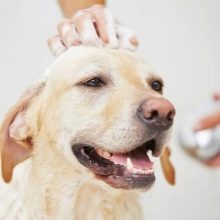
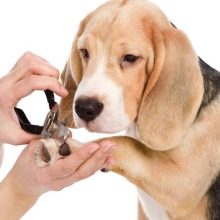
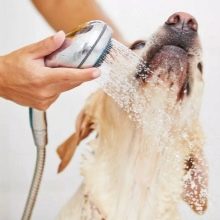
What breeds are needed?
Normal hygiene procedures are essential for all animals. Dogs and cats should periodically clean their ears, teeth and eyes, and comb their fur so that the pets feel good and do not get sick. But complex haircuts and hairstyles are needed only for certain categories.
- Exhibition animals, which should appear before the experts in all their glory. Preparation for the event is thorough, in addition, sometimes with the help of the correct haircut, you can hide minor anatomical defects.
- Decorative pets. For example, Yorkies or fluffy Chihuahuas often get model hairstyles so that the pet pleases the owner with his appearance.
- Long-haired animals. They have a very thick and long coat, and a haircut here is not a whim, but a necessity.
- Wire-haired pets. The structure of their fur is dense, so animals need trimming - plucking out dead hairs in order for the molt to pass faster.
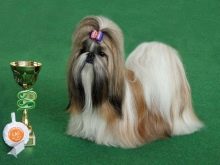
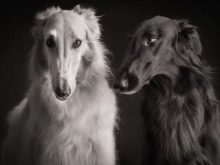
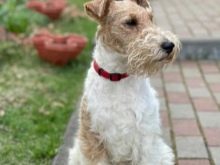
Long-haired dogs should be taught to groom from about three months of age. It is best to bring the puppy to the salon, as an inexperienced owner can accidentally injure the animal. In addition, a pet can get scared from pain and acquire a negative reaction to everything related to the procedures.
Some breeds with an undercoat with axial hair do not need a haircut, moreover, it is not recommended for them. - this can lead to hair loss and growth retardation. These are dogs such as Labrador, Corgi, Beagle, German Shepherd, Husky, Sheltie, Spitz, as well as short-haired breeds, such as pugs or French Bulldogs, usually do not have a haircut - this is not necessary.

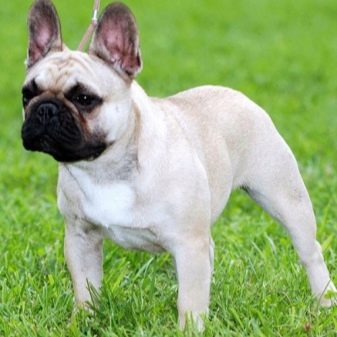
What is included?
There is a specific set of procedures that is most often referred to as standard care. Such grooming is relevant for dogs and cats. Certain points may differ. For example, Sphynx cats, which have no hair, are not combed or cut, but they need regular bathing. Also, some owners pay special attention to the appearance of their pets, ordering not only standard procedures, but also a model haircut and even coloring.
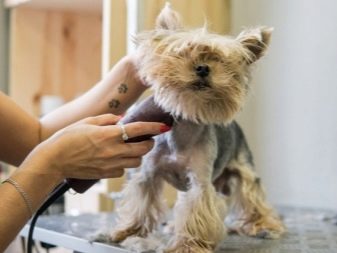

Combing out
With the help of a special brush, the wool is carefully combed, separating the tangled strands. This helps to give the animal a well-groomed and tidy appearance, as well as to remove lost hairs, which is especially important during molting.
In some cases, the procedure also involves removing tangles if the coat is very thick and easily clumps.
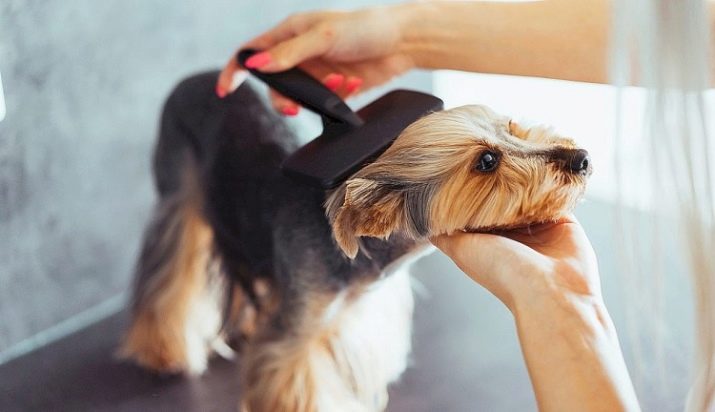
A haircut
Depending on the type and length of the coat, a machine or scissors are used: ordinary or thinning. The procedure also includes a preliminary wash, since only clean wool can be cut. Each breed has its own grooming standards, but this only applies to shows. If the animal does not participate in such events, as a rule, the owners choose functional haircuts that facilitate care.
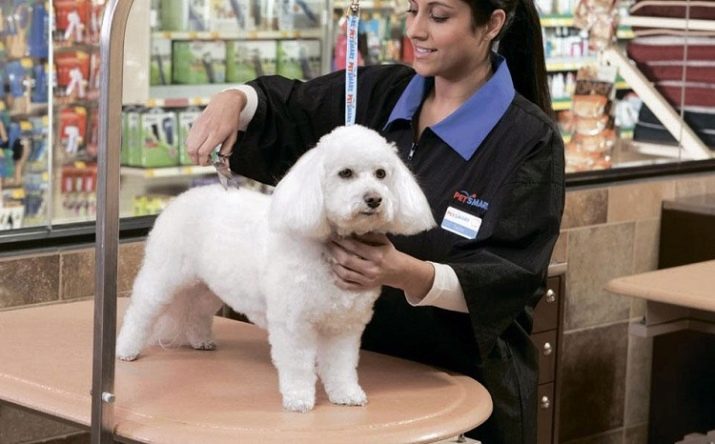
Eye care
This procedure must be done regularly - about once a week. In the corners of the eyes in dogs and cats, secretions accumulate, "paths" are formed. With them, the animal looks unkempt, in addition, sometimes a neglected condition can lead to inflammation and various diseases. Discharge is carefully removed with a cotton pad and a special lotion.
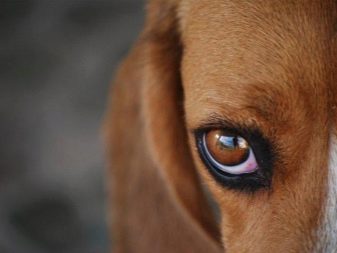
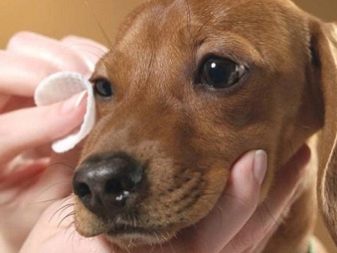
Ear cleaning
Animals cannot cope with this matter on their own, so they need help. Sulfur and dust accumulate inside the auricle, in addition, parasites can settle there. Visual inspection and cleaning should be done once a week to avoid problems. For this, special lotions and gels are used.
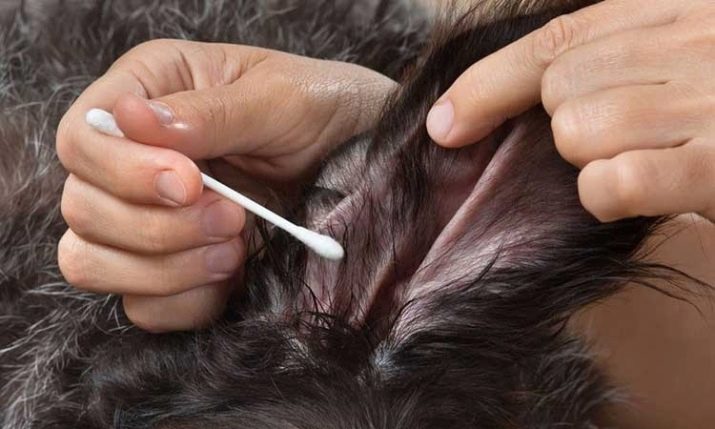
Teeth cleaning
Oral care plays an important role. In dogs and cats, plaque builds up on the teeth, which must be removed to prevent bacteria from multiplying. If this is neglected, tartar may develop. It not only causes discomfort to the animal, but also leads to the loss of teeth.
Cleaning is carried out approximately every 5-7 days, depending on the state of the oral cavity. You can use a special brush or cotton pad, and you will also need animal toothpaste. If it comes to the appearance of a stone, it is preliminarily softened with a special solution, and then removed with a scraper.
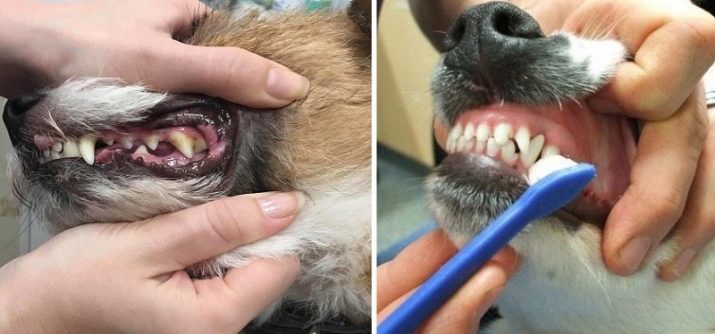
Claw cutting
If the dog moves with a characteristic sound, reminiscent of the clatter of heels, it’s time for a haircut. In pets, the claws do not have time to grind themselves, and when they become too long, it interferes with the pet. A dog or cat can snag and injure the paw.
To trim the nails, you need special scissors, as well as a file to smooth out the sharpened corners. The procedure must be carried out with care to avoid damaging blood vessels or bleeding.
The claws are trimmed as needed, depending on the growth rate, this is done weekly or once a month.
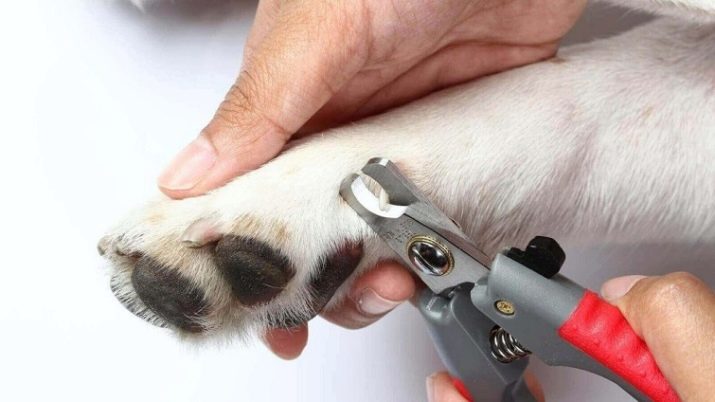
Types of haircuts
Grooming can be divided into several categories. Depending on this, the set of procedures, their duration and haircut features differ.
Hygienic
This is part of taking care of your pet's health. Haircut features depend on the breed. Some dogs only need to be combed, others have their hair trimmed in certain places: under the tail, between the toes, to facilitate grooming. There are also breeds that require a regular haircut every 6-8 weeks.
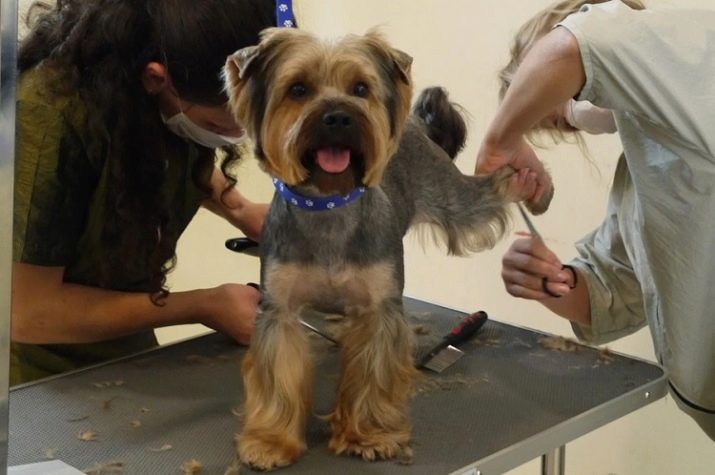
Exhibition
Held before certain events. In this case, it is necessary to strictly follow the standards and requirements so that the animal can receive a high rating. If hygiene procedures can be performed at home on their own, then before the exhibition, many owners prefer to take the pet to the salon so that they can do a high-quality haircut and styling there.
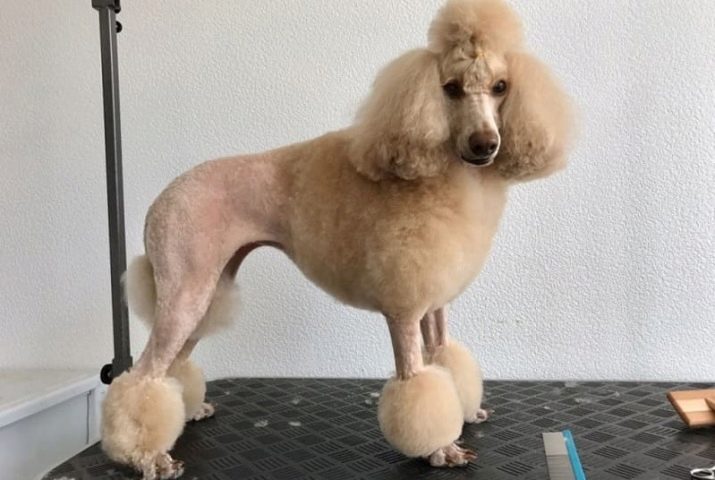
Creative
This is an option for those who want to create a unique and non-standard image for their pet. A professional groomer will help you choose an unusual haircut, perform safe coloring and other aesthetic procedures.

Tools and tools
Dogs and cats require special cosmetics, human cosmetics are not only unsuitable for them, but can also be dangerous. Pet care products are available at your pet store or veterinary pharmacy.
Usually such a set is used for home grooming.
- Shampoo. It should be suitable for the animal in terms of coat type, color and age. Powder will also be useful - it allows you to clean your pet without water, which is quite convenient.
- Air conditioning. Facilitates combing, makes the coat softer and silky, gives a healthy shine.
- Hygiene spray or lotion. The product is necessary for cleaning the ears and eyes.
- Toothpaste. In some cases, additional tartar removal solution may be needed if the pet has similar problems.
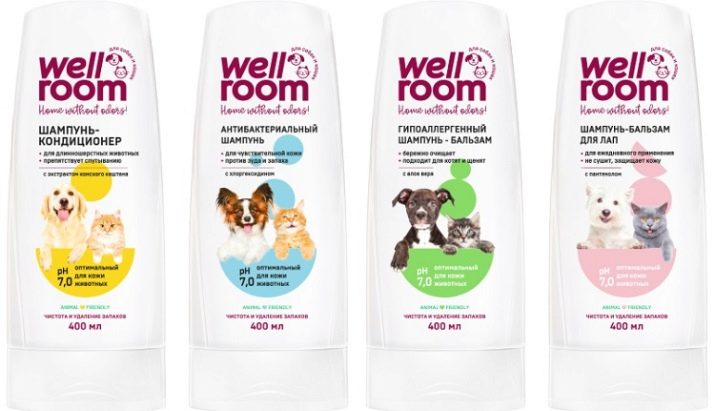
Grooming animals requires the right tools and equipment. Grooming supplies can also be purchased at a specialty store to provide home care for your pet.
The groomer will need the following accessories.
- Comb, slicker, brush or toothed glove - the choice of the tool depends on the characteristics of the coat.
- Scissors: regular and thinning, a collar cutter for untangling matted lumps, a knife for removing long coarse hairs. Also, a clipper or trimmer can be used for a haircut.
- Hair dryer. It is necessary for drying pets with thick hair - a compressor is used for such purposes in the cabin. If the animal is short-haired, then you can get by with a towel.
In addition, you will need a certain set of consumables: napkins, cotton pads and sticks, gloves.For more convenient work, you can purchase additional accessories (brackets, holders, stands) that help to place all the necessary tools of the groomer.
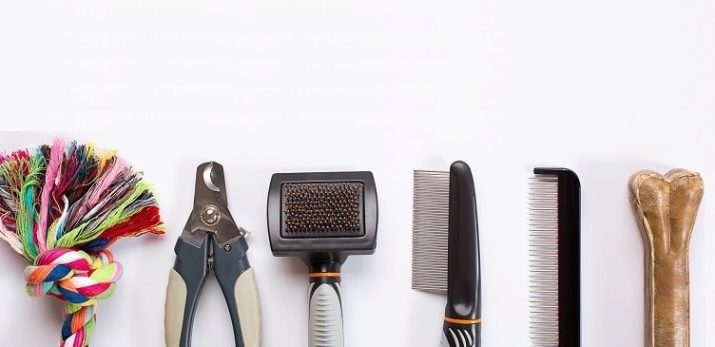
Main steps
Hygienic grooming can be done at home, with your own hands. If you have never done this kind of work, some salons hold master classes for beginners, showing the basic methods and techniques. You can attend several lessons to learn how to perform the basic procedures.
As a rule, home grooming involves several stages.
- Combing out. Helps make washing more comfortable. Also, at this stage, you need to remove the tangles, if any.
- The washing up. This can be done in the bathtub, shower or even in the sink if the animal is small. The water should be warm, but not hot. It is important to rinse off the shampoo well as dried-on residues can cause irritation.
- Drying. A wet animal can freeze and catch a cold, so it is necessary to dry the coat.
- A haircut. After washing and drying, the coat can be trimmed or removed in specific areas.
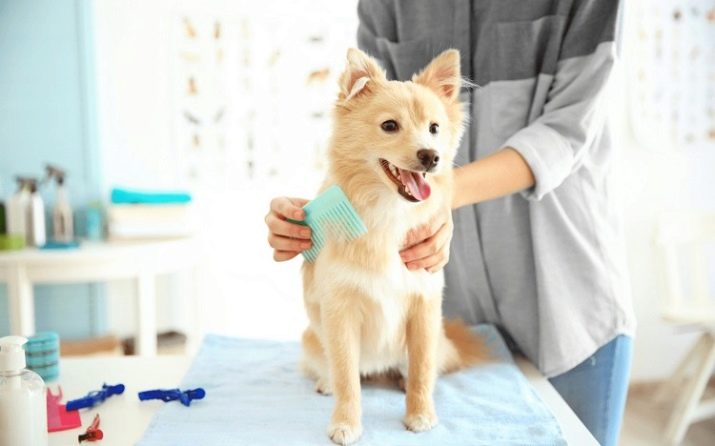
In addition, animals need to clean their ears, eyes and teeth about once a week. Clipping can also be done at home.
It is advisable to teach a pet to care from an early age so that he is not afraid of procedures. So you make life easier for yourself and him. Those dealing with an adult animal that is not accustomed to grooming will have to be patient and perhaps seek professional help to find the right approach.
